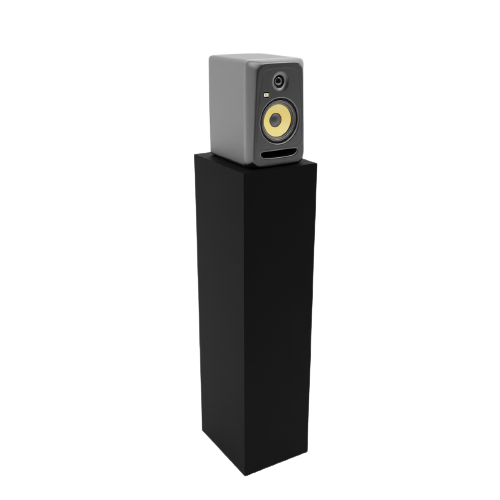
Table of Contents
Introduction
The search term speaker isolation pad is a term that describes a vibrational management device. It is designed to minimize the transfer of vibrations from the speaker onto the device that is supporting it. The speaker can sit on top of a table or desk in the case of mixing engineers. The vibrations from the speaker are produced by two main sources.
We have a mechanical driver that moves back and forth. This movement produces vibrations inside the air trapped inside the speaker. The cabinet begins to move. We now have a driver moving back and forth along with a cabinet that moves in sympathy to the electro – mechanical movement of the driver itself. Any speaker isolation pad must be able to deal with two main processes.

Effective Isolation for Lower and Higher Frequency Energy
It must first be able to absorb lower frequency energy that is occurring inside the speaker cabinet and is being transferred through the cabinet. This will assist in reducing the pressure through the absorption process. If we absorb excess energy from the cabinet, we reduce the amount of energy that will transfer from the speaker cabinet to say a desk or speaker stand.
Our next task is to attenuate the vibrations of the middle and High frequencies. We do this by building a barrier to minimize the vibrational signature of middle and higher frequency vibrations. Two forces at work in any speaker isolation pad or any other support system.

Sealing Vibrations for Enhanced Audio Performance
Think of a speaker isolation pad or other device of this nature as a gasket that seals two contacting surfaces from liquid transfer. Take the drain plug on an oil pan. When you drain the oil and reinsert the drain plug there is a neoprene washer on the drain plug which acts as a seal to prevent drips. We are not isolating and sealing from liquid medium.
However the principle of any speaker isolation pad is the same type of system. It isolates one material type, the speaker cabinet from the table or speaker stand it is sitting upon. Isolation is the key word here. Using a different surface to contact both the source and receiver of low, middle, and high frequency vibrations.
Combining Diaphragmatic Absorption with Effective Vibration Management
Any speaker isolation pad device must do two things well. It must first absorb lower frequency pressure using sound absorption technology that focuses on lower frequencies and produces a low level and high rate of absorption per square foot of surface area. Diaphragmatic absorption is the process we use at Acoustic Fields.
It is the same technology as we have in our ACDA series. Our carbon diaphragmatic absorption process manages the low frequency absorption requirements of the speaker isolation pad system. The next methodology that must be used is to build a structure that has the proper vibration management system for middle and high frequency vibrational energies.

Elevating Audio Precision
Our Speaker Platforms also raise any speaker or instrument off the floor or whatever surface it is sitting upon. Reflections from any surface area that is close to the speaker are some of the first reflections to reach a person’s ears.
When we design critical listening environments, we spend extra attention to the reflections from both the floor and ceiling. Reflections from surface areas are a form of distortion. Reflections from any room surface area distort the direct or straight line energy from a loudspeaker. Raising the speaker of the floor will improve room response from 3-6dB SPL.








The discussion on ductwork noise transmission from Acoustic Fields highlights crucial aspects of HVAC system acoustics. The movement of air…
Great build plans. thank you Denis
You must use absorption. Never place a chair against a wall.
A friend and I built several diffusors using these plans and they turned out absolutely beautiful. Very good instructions and…